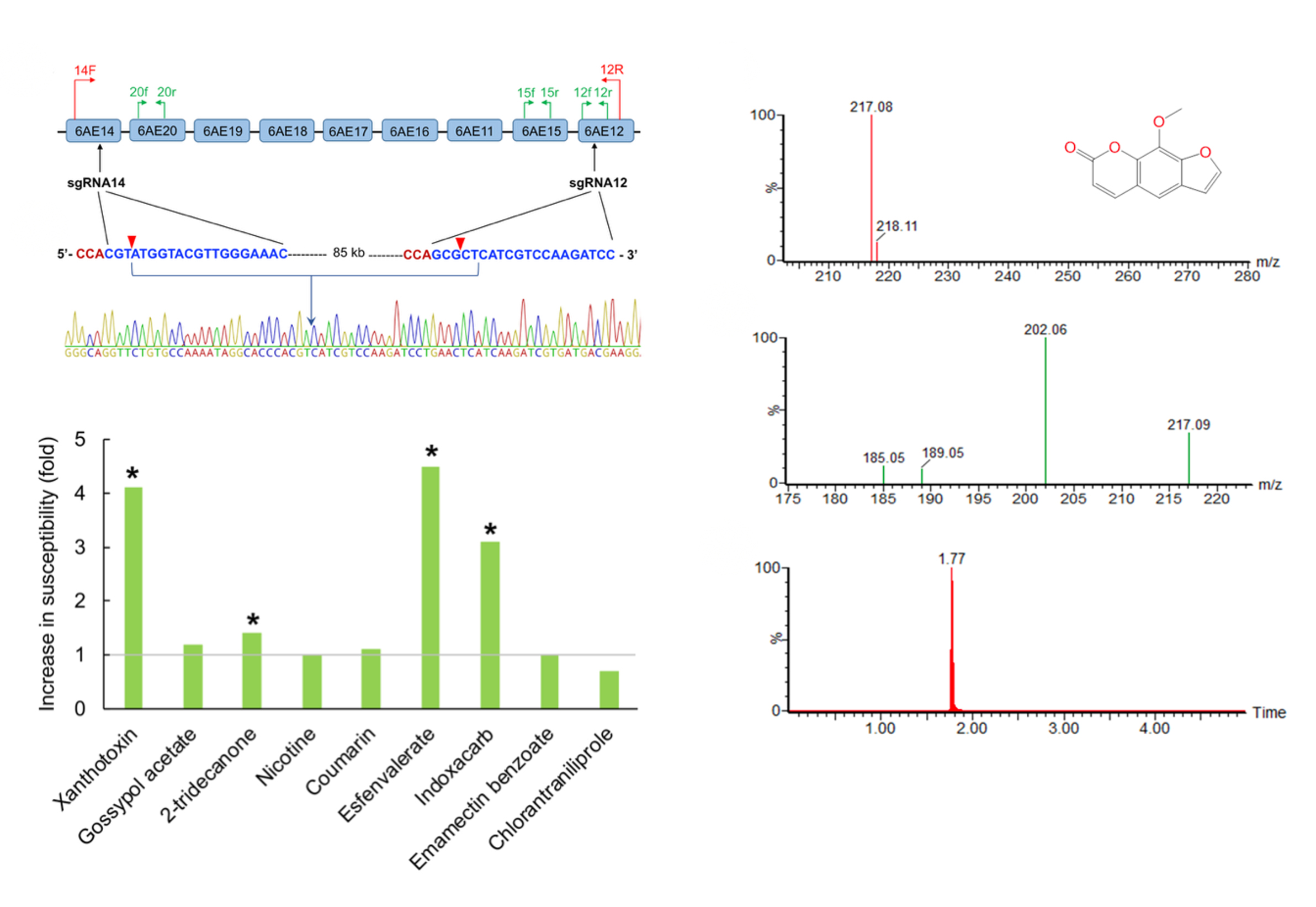Amplified cotton bollworm cytochrome P450s in CYP6AE gene cluster were demonstrated in the detoxification of xenobiotics and adaption to the host plants. On November 16, 2018, a new study published in Nature Communications by Professor Yidong Wu and colleagues found the cytochrome P450s in cotton bollworm’s CYP6AE gene cluster could metabolise different kinds of phytochemicalsand insecticides. A reverse genetic strategy and in-vitro metabolism were conducted to confirm the important roles of CYP6AE gene cluster in the host shifts and insecticides resistance. Ph.D. students Huidong Wang and Yu Shi are co-first authors and Yidong Wu is the corresponding author.
During the long period of the insects-host plant co-evolution, phytochemicals were produced by the plants for the defense of insects. As well, the herbivore insects create novel detoxification enzymes for the chemical defense. Insect cytochrome P450 is a kind of important detoxification enzymes to cope with the plant defense compounds. It acts principle roles in the detoxification of the plant toxins and the evolvement of insect pesticide resistance. Generally, there are over 100 P450 genes in the genome of Lepidoptera. The substrate spectrums of different P450 enzymes may be overlapped with each other. Accordingly, it is an extremely challenging work to pinpoint the relationships between the roles of P450s in the detoxification of phytochemicalsand pesticides.

CYP6AE gene clusterinvolves in detoxification of xenobiotics in Helicoverpa armigera
There are nine head to tail P450 genes in the cotton bollworm’s CYP6AE cluster, and recent studies indicated that some members within this cluster might be related to the detoxification of xenobiotics. In this research, the whole CYP6AE gene cluster (85kb) was knockout by CRISPR/Cas9 genome-editing technology firstly. Then, significantly enhanced susceptibilities of the knockout strain towards two phytochemicals (xanthotoxin and 2-tridecane) and two pesticides (esfenvalerate and indoxacarb) were found. Subsequently, nine CYP6AE P450s were heterologously expressed and their metabolic activities to the above four xenobiotics were tested. Five detoxification P450s in CYP6AE cluster were identified ultimately,
These results provided crucial evidences for the study of the evolution of cotton bollworm’s P450 genes under the selection of exogenous toxins. Selection of the CYP6AE cluster as a heritable unit would maintain the pests’ ability to detoxification of various plant defense chemicals and switch host plant. Additionally, the amplification of CYP6AE cluster provided important gene resources for the detoxification of pesticides.
